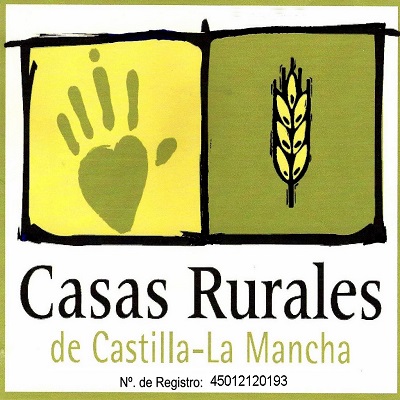Fill or Kill FOK Overview, How It Works, Example
After the limit price is triggered, the security’s price may continue to rise or fall. As a result, your order may or
may not execute depending if the security’s price in relation to your specified limit price is too great. Bear in mind that
your order may execute at a price more or less than your random walk hypothesis specified limit price. Limit orders are also subject to the existence
of a market for that security. Assume a trader wants to open a long trade of lots in XAU/USD at $1800 per lot. A FOK order should be placed if the trader wants to purchase 1000 lots immediately, and no fewer, at $1800 (or lower).
Before Newsom qualified his vow, Lee was widely viewed as a leading candidate to replace Feinstein. Residents, Charles Schwab Hong Kong clients, Charles Schwab U.K. Any online fill or kill orders that are executed will be subject to our dealing charges.
- Carefully review the order information and quote provided on the Trade Stocks Verification page before sending your
order to the marketplace. - However, if you aren’t making use of trading orders, you may want to consider doing so.
- For example, if you own two CDs, $250,000 from one bank and $250,000 from a second bank, and you have no other deposits at those banks, you’re covered for $500,000.
- You may need to research all of these trading orders if you want to invest in stocks.
If you decide to sell, you’ll receive the bid price plus any accrued interest. There are no guarantees that you’ll get what you originally paid for the CD. A ladder strategy helps investors stay invested and takes the guesswork out of timing. If interest rates rise, maturing CDs can be reinvested trailing take profit at higher yields. If interest rates fall, the interest earned from the existing CDs would likely be higher than market interest rates. A CD ladder doesn’t take away interest rate risk – but it allows investors to stay invested regardless of interest rates are rising or falling.
Assume an investor wants to purchase 1 million shares of Stock XYZ at $15 per share. If the investor wants to buy 1 million shares fairly immediately, and no fewer, at $15 (or better), an FOK order should be placed. If a broker has more than a million shares in its inventory and would only like to sell 700,000 shares at the $15 price, the order would be killed. If the broker is willing to sell 1 million shares but only a price of $15.01, the order would be killed. Once it’s set up, the order will be canceled if the broker can’t meet the 500,000 shares demanded. For example, if the broker offered to sell the 500,000 shares for $100.5, the order also would be canceled.
Trading Stocks
Limit orders are a primary alternative and can be particularly useful when market volatility is on the rise. When you are making a trade, you will be prompted to select an order type after selecting a symbol, action (buy, sell, etc.), and quantity. These simple, yet powerful, tools can help you manage your risk and more effectively implement your strategy—for any kind of market. That sounds nice … but it really means your broker gets to choose. Again, you place a FOK order to buy 10,000 shares of stock XYZ at $5.20. If your broker can’t fill the full order, you’ll have to decide whether to cancel the remaining shares or wait.
Placing a trade makes the investor or trader liable for the order on fulfillment, regardless of whether the trader receives timely notification. Kill orders issued or received after fulfillment of a trade will not be honored, and will not change the trader’s responsibility to follow through on the placement order. A “fill or kill” (FOK) order is a type of order that investors can use to buy or sell securities in financial markets. This order specifies that the entire order must be filled immediately or canceled if the entire order cannot be filled at once. In other words, if the order cannot be completely executed immediately, then the order will be canceled. Traders use Fill or Kill (FOK) orders to ensure that the whole order gets executed in the shortest period.
- Buy limit orders put a cap on the price above which an investor will not pay, while sell limit orders set a target for the cheapest price the investor will sell for.
- The fill or kill (FOK) is a specific type of limit market order which tells the broker to execute the order immediately and entirely or not to fulfill it at all (kill it).
- Each CD you purchase from a different institution is FDIC-insured in aggregate based on ownership type at that bank.
- If the 120th day falls on a weekend or
holiday, such orders expire before the market opens on the first business day following the expiration day. - That could influence the stock’s price and ruin the entry point.
Because such orders are typically placed for large quantities, prolonged execution of the order has the potential to cause significant changes to a stock’s price and causing market disruption. The Charles Schwab Corporation provides a full range of brokerage, banking and financial advisory services through its operating subsidiaries. Neither Schwab nor the products and services it offers may be registered in your jurisdiction.
Start a global, multi-asset portfolio with an award-winning platform
You can view or cancel your fill or kill instructions in the ‘Pending Orders’ section of your account. If the market is closed or you’re unable to get a live quote, you’ll see an option labelled ‘Place a fill or kill order’. Yes, all open GTC and GTX orders expire 120 calendar days after they are placed. If the 120th day falls on a weekend or
holiday, such orders expire before the market opens on the first business day following the expiration day. You cannot place restrictions on the execution of a market order.
Is there a minimum quantity for an AON or an AON/DNR order?
Assume an investor wants to purchase one million shares of Stock X at $15 per share. If the investor wants to buy one million shares, and no fewer, at $15 (or better), an FOK order should be placed. If a broker has more than a million shares in is inventory and would only like to sell 700,000 shares at the $15 price, the order would be killed.
Current CD rates available through Schwab CD OneSource
I’ve missed plays before because I had used the wrong order type and couldn’t get filled. It usually takes just a few seconds to know whether your broker can fill the order. They’ll fill as much of the order as possible and cancel the rest. An IOC is similar to a FOK with one major difference — it can fill all, some, or none of the requested shares. Traders often use these orders to open a position without influencing a stock’s price. TD Ameritrade is famous for its high-quality research offerings, including education, guidance and even some advanced data from third-party sources.
Share
Many portfolio managers use technical analysis, defined as the scrutiny of stock price patterns and trading volume, which may necessitate using an AON order to enter or exit the market. When a stock price trades above or below a range of trading, the price may indicate a future trend. Some traders like GTC orders because they allow buying at a certain price point. So you don’t need to be first to a trade or fill an entire position.
Brokers fill the order at the specified price until it’s complete. If you’re new to trading, Level 2 is a tool I use every day to get in and out of stocks safely. Watch my “Learn Level 2” DVD to learn how I use this tool. Let’s say you place an order to buy a bunch of shares, but none are available. That creates demand that will sit on the Level 2 and likely push the price of the stock higher.
The idea behind this order is to take advantage of a rare trading opportunity on the market where it’s all or nothing. Stock trading runs at $6.95 per trade, whereas broker-assisted trades cost $44.99 per trade. Get instant access to lessons taught by experienced private equity pros and bulge bracket investment bankers including financial statement modeling, DCF, M&A, LBO, Comps how to buy luna and Excel Modeling. For example, if an investor wants to buy ten shares of XYZ for $5, he can place an order to buy them when the price hits $5. An investor will usually choose between day order, good till date (GTD), good ‘til canceled (GTC), and fill or kill (FOK). Investors have a wide range of order types to use while investing, depending on the investor’s strategy.





